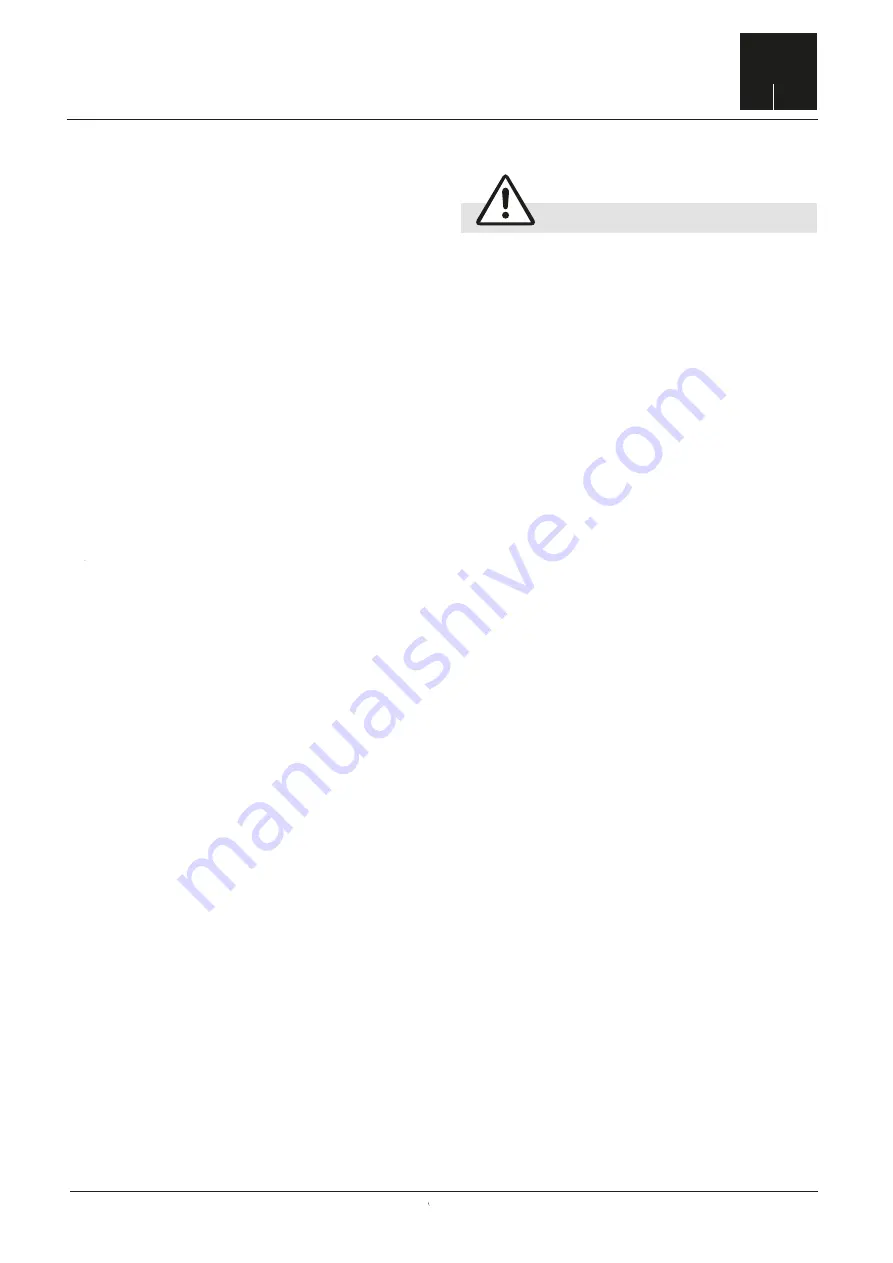
77
INDUSTRY
Section 6
Maintenance
•
•
•
•
•
•
•
•
•
•
•
•
•
Routine maintenance consists of daily cleaning:
of all the parts that are in contact with food,
of the stainless steel parts inside the cabinet.
To be also regularly checked:
optimal sealing of the door gasket,
the correct positioning of the door,
cleaning the evaporator and the tray support. Good
maintenance allows better performance and longer
equipment life.
For correct cleaning of the cabinet:
Perform a defrost by leaving the door open.
Do not use pressurised water jets to wash internal and
external parts of the blast chiller.
Do not use metal tools such as screwdrivers to remove
ice or accumulated residues; if required use wooden or
plastic spatulas.
Do not use solvents, thinners or preparations contai-
ning salts, acids or any other substance that can
leaveresidues that are harmful, toxic or hazardous for
human health.
It is essential to clean the needle probe of the blast
chiller daily. Use products appropriate for cleaning
stainless steel. It is recommended to rinse the surfaces
well after having treated them with the appropriate
detergents.
Do not use solvents, thinners or preparations contai-
ning salts, acids or any other substance that can
damage the protective oxide layer of stainless steel.
It is advisable to clean stainless steel appliances with
specific detergents. Do not use detergents containing
abrasive powders or bleaching substances of any
kind. If required, it is possible to use a mild solution
of water and washing up liquid. Surfaces treated with
detergent must always be rinsed with plenty of water
and then dried.
Avoid cleaning the surfaces of the blast chiller with
scourers or steel wool or with water containing iron
due to rusty pipes as it could trigger corrosion and
compromise the protective oxide layer.
If the machine is not being used, always leave the door
open so that the chilling cabinet is well ventilated.
6.5.2 Maintenance and cleaning of
the chilling cabinet
WARNING!
Stainless steel should not remain in contact for
prolonged periods with food products containing
acids or extremely high salt concentrations such
as sauces, gravies, etc. as under certain conditions
they can damage the protective oxide layer of the
steel. In this case, it is a good idea to rinse such
surfaces with water.


















